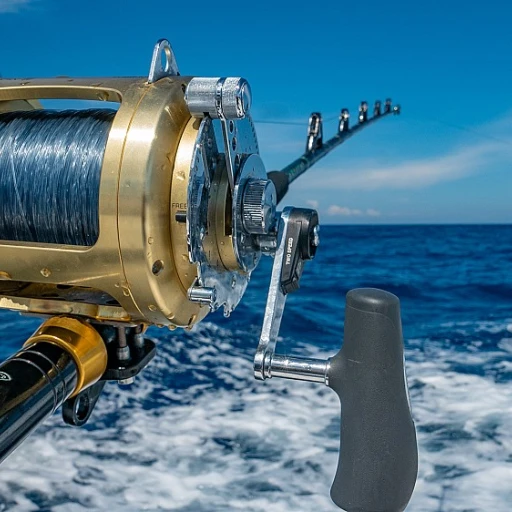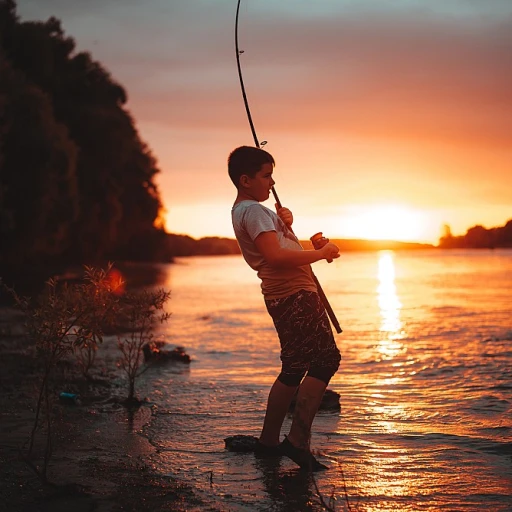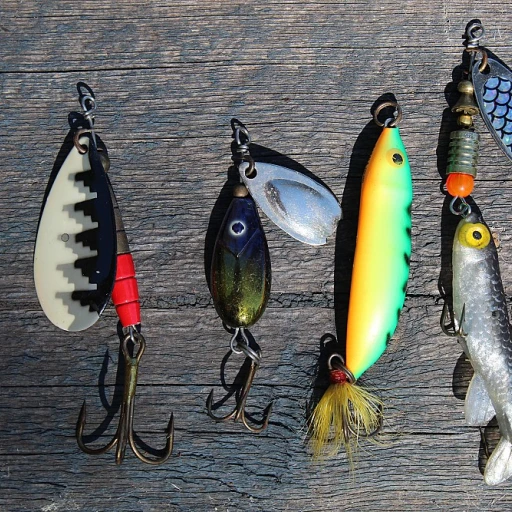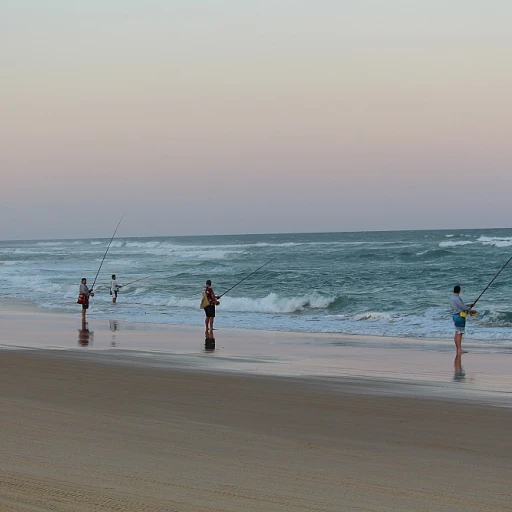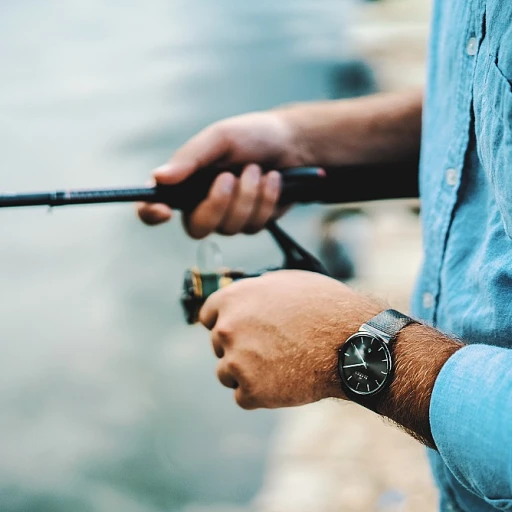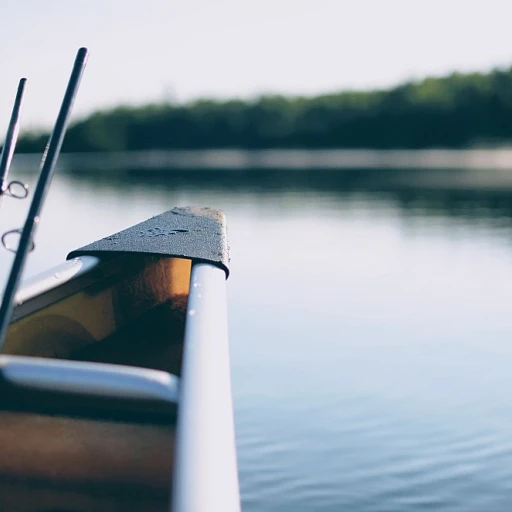
Understanding the largest grouper species
A deep look at goliath and giant groupers
When it comes to the biggest groupers, the goliath grouper (scientific name: Epinephelus itajara) and the giant grouper (scientific name: Epinephelus lanceolatus) are at the top of the list. These gentle giants are like underwater bulldozers, roaming their territories with slow, deliberate movements.
Goliath groupers, found primarily in the coastal waters of the Atlantic Ocean, specifically around Florida, the Gulf of Mexico, and the Caribbean, can reach lengths of up to 8 feet and weigh as much as 800 pounds. Their habitats include coral reefs, mangroves, and shipwrecks, where they prey on crustaceans, smaller fish, and even sea turtles.
The giant grouper, also known as the Queensland grouper, is the heavyweight champion of the Indo-Pacific waters, including Japan, Australia, and the Red Sea. These fish grow somewhat larger than their Atlantic counterparts, with some individuals recorded at over 10 feet long and weighing in at over 800 pounds.
The sheer size and dominance of these species make them both awe-inspiring and sometimes a bit intimidating. Despite their size, these groupers are known to be quite gentle towards humans, earning them the nickname "gentle giants.".
One particularly colossal specimen, Daniel Kemp's recorded catch of a giant grouper, weighed in at an impressive 1,200 pounds, making it one of the biggest fish ever caught.
Both species play crucial roles in their ecosystems. As top predators, they help maintain the balance of marine life on coral reefs and other structures. Their presence affects the population and health of other species, impacting the overall health of the marine environment.
This blend of awe, responsibility, and fascination makes understanding these massive creatures essential for both recreational fishers and marine biologists.
Habitats of the biggest groupers
prime locations for grouper enthusiasts
When we're talking about the giants of the sea, their homes are as vast as their sizes. The largest groupers can be found scattered across various warm and tropical waters around the globe. But if you're looking to catch a glimpse or even snag one of these behemoths, there are some prime locations to consider.
the Florida giants
Florida, particularly the southwest region and the Ten Thousand Islands, is a haven for those on the hunt for goliath groupers. With an estimated 4% of juvenile fish found in these waters, Florida offers a perfect mix of nursery and adult habitats. It's not just about the goliaths, though. The diversity of grouper species in Florida is remarkable, from the common gag to the elusive warsaw grouper.
across the Gulf of Mexico
The Gulf of Mexico is another hotspot, known for its rich marine life and productive bottom reefs which attract various groupers, including the epinephelus and the gentle giant fish. Official records indicate that around 22% of groupers in the Gulf reach weights more than 400 pounds.
The Gulf is also home to the bony fish species of groupers. In 2017, a report highlighted how grouper fishing in these waters contributed significantly to local economies in the U.S., Mexico, and Central America. Remember to check local regulations before planning your fishing trip to ensure sustainable fishing practices.
the Indo-Pacific realm
If you broaden your horizons to the Indo-Pacific, you'll find an array of giant fish goliath, including the legendary epinephelus lanceolatus. Known as the giant grouper, these species can grow to be true monsters. Australia and Japan are particularly famous for these gentle giants, where sightings and catches of fish weighing over 800 pounds aren't unusual.
shoals of the Caribbean and Atlantic
The Caribbean and Atlantic waters are teeming with groupers, including the Atlantic goliath grouper. These massive creatures are considered one of the largest bony fish in the world. The Bahamas and parts of South America, especially Brazil and Peru, have reported sightings and catches of unbelievably large specimens, contributing to the lore of these gentle giants.
prime grouper fishing reefs
Reefs play a vital role in the life cycle of groupers. They serve as protective zones for juvenile sea turtles, sharks, and crustaceans, offering shelter and hunting grounds. The interaction between groupers and these reef ecosystems is vital for researchers studying marine biodiversity. Around 33% of all grouper species have been documented near reef structures in the Western Atlantic alone.
For more information on record-breaking catches and to dive deeper into this watery world, check out this in-depth look at record-breaking catches.
Record-breaking groupers: size and weight
Goliath Grouper: The Ultimate Heavyweight
The goliath grouper (Epinephelus itajara) is a true marvel among fish species. Renowned for its massive size, this gentle giant can grow to staggering lengths. According to the International Game Fish Association (IGFA), the largest goliath grouper ever caught weighed in at a whopping 680 pounds (310 kg). This colossal fish was snagged off the coast of Florida, showcasing why this species holds the title of the biggest grouper.
Giant Grouper Facts and Figures
Also in the heavyweight category is the giant grouper (Epinephelus lanceolatus), often called the 'Queensland grouper' due to its common occurrence in the warm waters around Australia. This species can tip the scales at up to 880 pounds (400 kg), towering at lengths over 8 feet (2.5 meters).
Additionally, the Atlantic goliath grouper and the giant grouper are not just hefty in weight but have become icons in the fishing community. Divers and anglers often tell tales of encountering these formidable fish. One notable incident involved a goliath grouper nearly swallowing a grown man's arm during a fishing expedition. Fortunately, both the fish and the man emerged unscathed from this dramatic episode.
What's in the Numbers?
Studies highlight the incredible growth rate and longevity of these fish. The goliath grouper can live up to 37 years, boasting a steady weight gain over its lifespan. Research by the U.S. Fish and Wildlife Service notes that this species often stick to their natal reefs, making them susceptible to overfishing if not carefully managed.
Record-Breaking Moments
In the world of recreational fishing, setting records is a high-stakes game. Like the record-breaking crappie catches, each year, fishermen aim higher, hoping their next catch will be the biggest. For example, a Florida man, Daniel Kemp, made headlines in 2018 when he caught a goliath grouper weighing 422 pounds, setting a new record for the largest grouper caught using rod and reel in the Gulf of Mexico.
This unyielding quest for record phases balances delicately with conservation needs, echoing the sentiments of experts like Dr. Chris Koenig from Florida State University. Koenig emphasizes the need to tread carefully and sustainably in these waters to ensure these marvels of nature persist for generations to come.
Conservation Challenges and Successes
Despite these exciting record-breaking moments, it's important to note that the goliath and giant groupers experience mounting pressures from commercial and recreational fishing. According to the IUCN Red List, both species are listed as vulnerable, necessitating stringent conservation efforts to protect these oceanic giants.
The efforts include no-take zones, size and bag limits, and seasonal closures. These measures have yielded positive outcomes; for instance, Southwest Florida has noticed increasing numbers of juvenile groupers making their way to the reefs, hinting at a resurgence of populations.
In sum, while we celebrate the awe-inspiring size and records of these giant groupers, maintaining a balanced approach ensures our ocean’s gentle giants continue to thrive.
Fishing techniques for catching giant groupers
Casting Techniques and Equipments
Landing a giant grouper isn't a casual afternoon at the beach. It demands precision, strength, and the right set of tools. Expert angler Daniel Kemp, renowned in southwest Florida, emphasizes the importance of using heavy-duty fishing equipment. Think thick lines like braided or monofilament with a test strength of around 100 to 150 pounds. This isn't your run-of-the-mill fishing gear.
Choosing the Perfect Bait
What you put on the hook matters as much as your technique. Live baits like blue runners, grunts, or pinfish are key, though dead baits like mullets and squid can also attract these giants. The goal is to mimic the natural prey of species like the goliath grouper (Epinephelus itajara) and the giant grouper (Epinephelus lanceolatus). These gentle giants, often residing in the reefs and bottoms, aren't easily tempted. But present the right bait, and you're in for a tug-of-war.
Location Matters
For the best shot at catching these behemoths, head to the reefs in the Gulf of Mexico or the Indo-Pacific region. Fish and wildlife experts in the United States have mapped out prime grouper habitats, with notable hotspots being the Ten Thousand Islands and certain parts of the Atlantic. Juveniles often hide amongst sea turtles and crustaceans in shallow reefs, while adults patrol deeper waters.
Understanding Grouper Behavior
Grouper fishing isn't just about the physical challenge; understanding their behavior is crucial. Groupers are ambush predators. They hide in reef crevices and wait for prey to pass by. Patience, combined with the right technique, can dramatically increase your chances of a successful catch. Daniel Kemp mentions that the best times to fish are during low light conditions, either early in the morning or late in the evening.
Expert Tips for Success
According to veteran anglers like Volkswagen's David Gentle Giant, the 'let it run' technique is a game-changer. When a grouper bites, give it some line. Let it run into its lair, then brace yourself and start reeling in with all you've got. This strategy helps in avoiding line breaks from their sudden powerful surges.
For more insights into the world of amazing catches, check out biggest goliath grouper ever caught.
Conservation efforts and regulations
Regulatory measures to protect grouper species
Efforts to conserve the giant grouper species like the Atlantic goliath grouper (Epinephelus itajara) are ongoing and include a mix of regulations and conservation programs. One of the significant measures implemented includes the prohibition of harvesting these fish in certain areas. In places like Florida, the goliath grouper is a protected species, which means that catch and release practices are strictly enforced. According to the Florida Fish and Wildlife Conservation Commission, possession of this giant is illegal due to both state and federal regulations designed to help population recovery.Important conservation programs
Various organizations and agencies work tirelessly to safeguard these gentle giants. The International Union for Conservation of Nature (IUCN) has listed the Atlantic goliath grouper as a critically endangered species on their Red List. This call to action has prompted many marine biologists and conservationists to study these groupers further, understanding their role in the ecosystem, and developing better strategies to protect them. The efforts don't stop there. Programs like the Goliath Grouper Spawning Aggregation Marine Protected Area program also play a crucial role in protecting these fish species during their breeding periods, ensuring a healthy population for future generations.Catch and release programs
Safe catch and release methods are essential for the conservation of the largest grouper species. Anglers are encouraged to employ techniques that minimize harm to these groupers. For example, using circle hooks instead of traditional J-hooks significantly reduces injury. Proper handling methods, such as avoiding pulling the fish out of the water entirely or supporting their weight properly, make a massive difference in their chances of survival after release.Scientific research contributions
Research significantly contributes to the conservation of groupers. Teams of scientists study the behavior, migratory patterns, and spawning habits of groupers to develop effective conservation strategies. For instance, understanding the impact of offshore oil rigs, which create artificial reefs, helps balance conservation efforts with industrial activities. Dr. Daniel Kemp, a leading marine biologist, emphasizes the importance of protecting juvenile sea turtles and crustaceans since they form part of the diet for juvenile groupers, forming an intricate balance within the marine ecosystem.Impact of public awareness campaigns
Public awareness campaigns promoting sustainable fishing practices and the importance of groupers in the ecosystem have shown positive impacts. By educating anglers and the broader community on the necessity of conservation, these campaigns help ensure that more people adhere to protective regulations. The community's engagement in these efforts is crucial; it's a collective responsibility to ensure the survival of these magnificent species.Regulation controversies
Despite the robust measures in place, there have been controversies surrounding the regulations. Some fishermen argue that the booming population of Atlantic goliath groupers threatens their livelihoods as these massive predators compete for the same fish. However, these claims are often countered by scientific studies indicating that the population numbers have not yet sufficiently rebounded. Balancing the needs of the fishing industry with conservation efforts remains a delicate task.Conservation efforts and regulations play a pivotal role in the survival of the giant grouper species. By adhering to these measures and promoting sustainable fishing, we can ensure that these majestic fishes continue to thrive in our waters for generations to come.
The role of groupers in marine ecosystems
Groupers as ecosystem engineers
Groupers, including giants like the Goliath Grouper (Epinephelus itajara) and the Giant Grouper (Epinephelus lanceolatus), play a critical role in their marine habitats. These bony fish are commonly found in the Atlantic, Indo-Pacific, and Reefs of Florida and the Gulf of Mexico. As apex predators, they help to maintain the balance of marine ecosystems by controlling the populations of smaller fish and crustaceans, including juvenile sea turtles and even sharks.
According to studies from the IUCN Red List, the presence of goliath groupers in reef environments is crucial for the health of coral reefs. Their predation on invasive species like lionfish aids in preserving coral ecosystems. These groupers excavate large holes in the ocean floor, creating hiding spots for other marine life. The Goliath grouper, for example, is often referred to as a 'gentle giant' due to its massive size yet relatively harmless nature towards humans.
Impact on local biodiversity
The colorful reefs and rich biodiversity of places such as the Bahamas, Caribbean, and Southwest Florida owe a lot to the presence of these gentle giants. According to Daniel Kemp, a marine biologist with extensive experience in the Gulf of Mexico, “Groupers are like the bedrock of reef ecosystems; without them, the intricate balance can tip, losing species that depend on groupers for survival.” Kemp’s findings showcase how essential these fish are, not just as part of the food chain but as key players in the structural integrity of reefs.
Human impacts and challenges
However, the role of groupers is often jeopardized by overfishing and habitat destruction. Many species, including the Atlantic goliath grouper, have seen their numbers dwindle and are now classified as vulnerable on the IUCN Red List. Responsible fishing practices and stringent regulations are imperative to ensure these magnificent creatures continue to play their part in marine ecosystems. The U.S. Fish and Wildlife Service advocates for creating marine protected areas (MPAs) where fishing for these species is restricted or entirely prohibited.
The success story of the Ten Thousand Islands in Florida, where goliath groupers have made a significant comeback due to conservation efforts, underscores the importance of protecting these habitats. Anglers and conservationists must work hand in hand to preserve the delicate balance of marine life.
Personal stories and experiences
Diving into unforgettable grouper fishing stories
Imagine the thrill of hooking a giant grouper, a creature so immense it feels surreal. Fishermen from around the world have shared some amazing tales of such experiences.
Take, for instance, Daniel Kemp, a seasoned angler from southwest Florida. He recalls the time he hooked a colossal goliath grouper weighing around 800 pounds. 'It took over an hour to reel it in,' Daniel says. 'The adrenaline, the struggle, it was all worth it when I finally saw that gentle giant up close.'
Another gripping story comes from a fisherman's encounter in the waters of the Gulf of Mexico. While exploring the Ten Thousand Islands, he caught an epinephelus lanceolatus, also known as the giant grouper. This beast of the depths weighed nearly 900 pounds. 'It was like nothing I'd ever seen,' he recalls. 'A true battle of man versus fish.'
Community and camaraderie in grouper fishing
Fishing isn't just about the catch; it's about the shared experiences and bonds formed along the way. Communities of anglers often come together, swapping stories and tips, all united by their love for the sea and the formidable groupers.
'There's a camaraderie that's unique to this sport,' says Maria Thompson, an angler and conservationist based in the Bahamas. 'When someone catches a big one, it's a matter of pride and celebration for everyone.' For many, it's these shared moments that make the sport so special, cementing friendships and creating lifelong memories.
The emotional journey of grouper fishing
For some, fishing is an escape, a way to reconnect with nature. The excitement of potentially catching one of the largest bony fishes, like the goliath grouper, goes hand in hand with the beauty of being out on the water. It’s a mixed bag of emotions — the anticipation, the battle, and eventually, the joy of a successful catch.
Michael Jones, a frequent angler in the indo pacific region, explains, 'It's not just about the fish; it's about the journey. The peaceful moments out at sea, the sudden rush when a fish bites, and the satisfaction of a great catch.' These experiences bring anglers back to the water time and again, always hoping for a bigger adventure and a bigger fish.
Future trends in grouper fishing
Future trends in grouper fishing
The realm of grouper fishing, particularly targeting the biggest groupers like goliaths and giants, is evolving. Innovations and shifts in fishing techniques, conservation efforts, and regulations are all playing a role in shaping the future of this sport.
Tech advancements reshaping grouper hunting
Technology is giving anglers a leg up. We're talking about submersible drones and advanced sonar systems that make locating these elusive giants a tad easier. For example, Daniel Kemp, an experienced angler from Southwest Florida, shares that the new GPS-enabled sonar devices have dramatically improved his success rates when targeting grouper species like the Epinephelus lanceolatus in the Gulf of Mexico.
Sustainability: a double-edged sword
With mounting pressure on marine ecosystems, there’s a balancing act at play. New regulations are being implemented to protect grouper populations, especially the endangered goliath grouper. The IUCN Red List categorizes the goliath grouper as vulnerable, pushing for stricter catch and size limits. This often causes tension between recreational fishers and conservationists.
Eco-friendly gear on the rise
Anglers are becoming more eco-conscious. Gear manufacturers are developing sustainable, non-toxic lures and lines to reduce adverse impacts on marine life. Brands like ‘Volkswagen’ of the fishing world, for instance, are pushing eco-friendly innovations that ensure the survival of smaller fish and juvenile sea turtles, which are often unintentionally caught.
The rise of catch-and-release
More anglers are adopting a catch-and-release ethos, sometimes out of passion for the sport, and other times due to evolving regulations. A recent survey by the Fish and Wildlife Service found that nearly 60% of those fishing for large groupers, especially in the Atlantic and the Gulf of Mexico, practice catch-and-release.
Education and awareness
Recreational groups and wildlife organizations are rolling out programs to educate anglers on best practices. These efforts are crucial in ensuring the long-term sustainability of grouper species, like the giant grouper (Epinephelus lanceolatus), which occurs in the Indo-Pacific.
The future of grouper fishing hinges on a delicate balance between angler satisfaction and marine conservation. As new practices emerge, there's hope that these giant fishes will continue to thrive, giving us, and future generations, the thrill of reeling in these gentle giants.

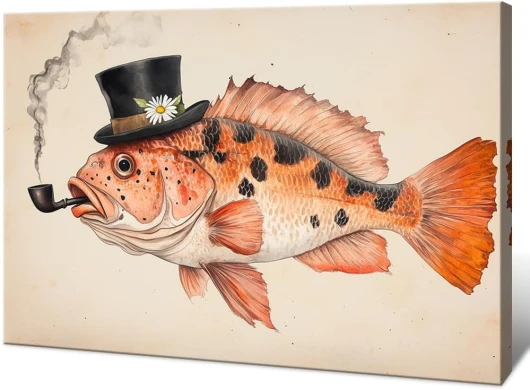

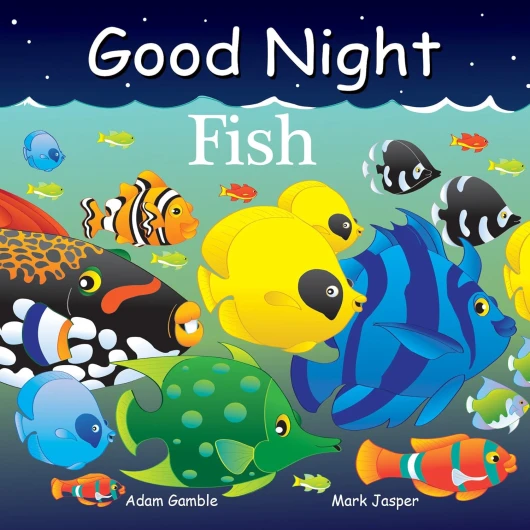
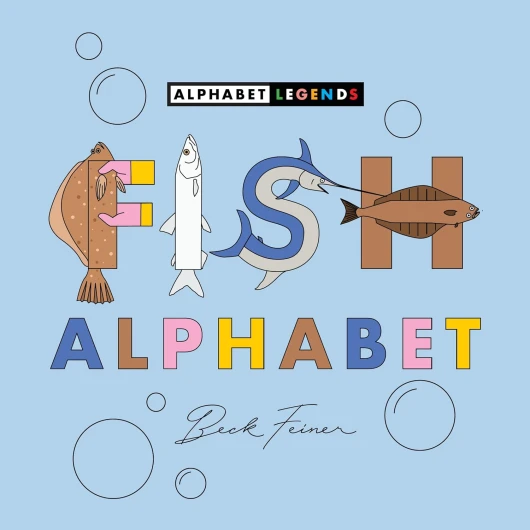

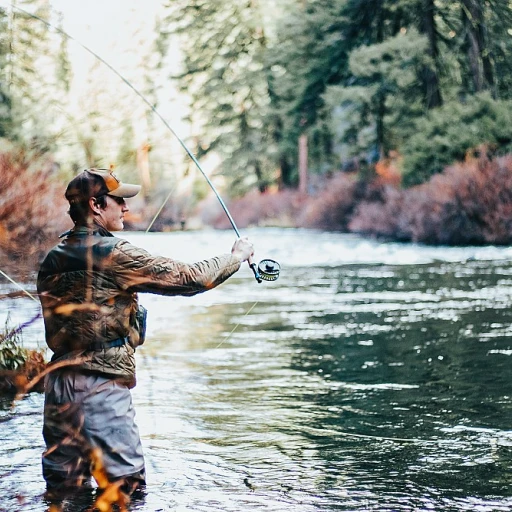
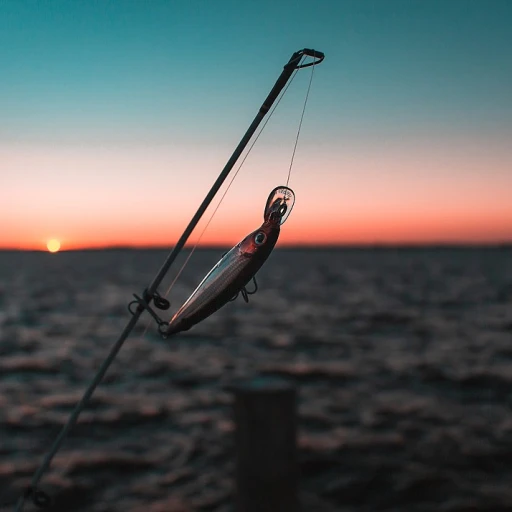
-large-teaser.webp)
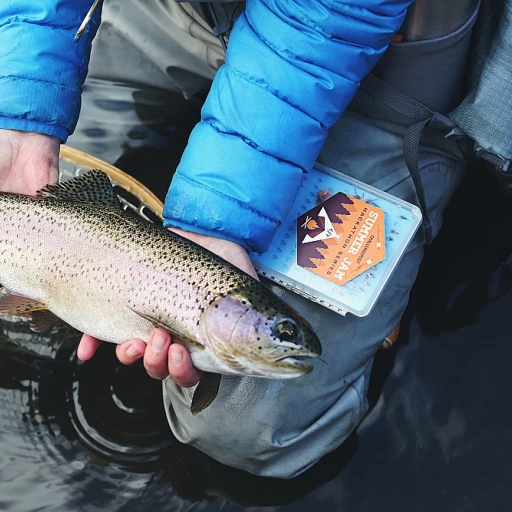
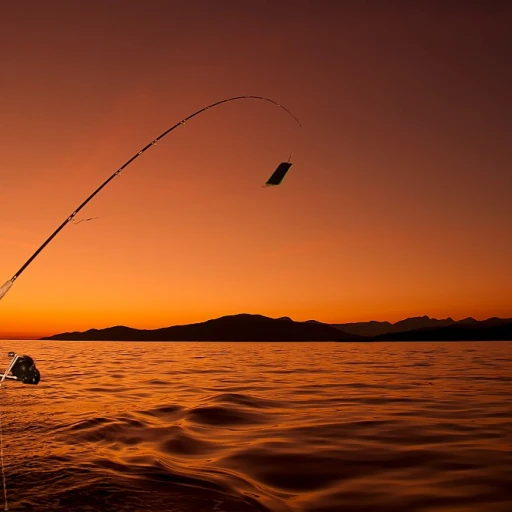
-large-teaser.webp)
-large-teaser.webp)
